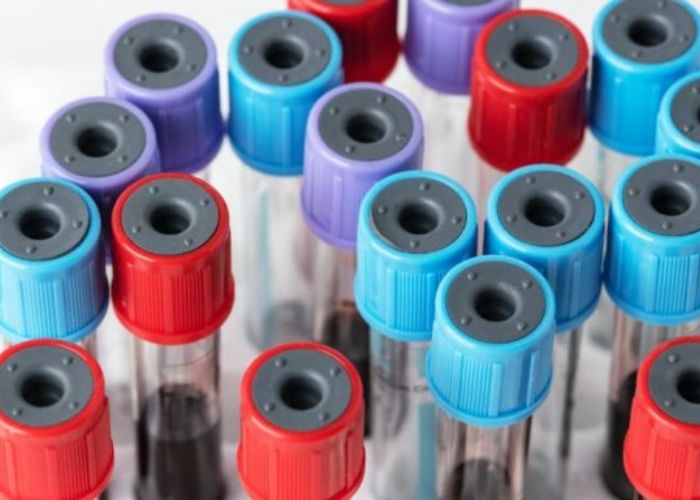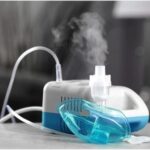As a phlebotomist with 7 years of experience drawing blood samples from patients, I have used all types of blood collection tubes. The tube used depends on what tests the doctor has ordered. In this article, I will explain the most common tubes used and their specific purposes.
What Are the Different Types of Blood Collection Tubes and Their Uses?
Here is the Different Types of Blood Collection Tubes and Their Uses:-
Purple-Top EDTA Tubes
The purple-top tube, also known as the EDTA tube, is the most commonly used. It contains EDTA (ethylene-diamine-tetra-acetic acid) which prevents clotting. This allows plasma and whole blood to be used for many different tests, including:
- Complete blood count (CBC) – checks levels of white blood cells, red blood cells, platelets, hemoglobin, and hematocrit
- Blood typing – determines blood group (A, B, AB, O) and Rh factor
- Serology and immunology tests – checks for antibodies and antigens
- Viral load counts – quantifies virus particles like HIV, hepatitis, etc.
In my experience, the EDTA tube is essential for hematology tests and accounts for at least 60-70% of the tubes I use for routine blood draws.
Red-Top Serum Tubes
Red-top tubes have no additives and allow blood to clot. After centrifugation, the liquid portion (serum) can be used for chemistry tests. Common tests on serum include:
- Liver function tests – assess ALT, AST, bilirubin, etc.
- Kidney function tests – check electrolytes, creatinine, urea, etc.
- Cardiac marker tests – troponin, CK-MB for heart attacks
- Lipid profile – total cholesterol, LDL, HDL, triglycerides
Serum tubes are the second most common after purple-tops in my workflow. I estimate around 15-20% of samples I collect per day require serum separation for blood chemistry analyses.
Light Blue-Top Sodium Citrate Tubes
Light blue-top tubes contain sodium citrate, which binds calcium and prevents blood from clotting. This allows assessment of coagulation function through tests like:
- PT/INR – evaluates clotting factors
- APTT – checks intrinsic pathway clotting factors
- Fibrinogen level – quantifies this clotting protein
- D-dimer – screens for thrombosis
As an experienced phlebotomist, I’ve learned that careful precision with the exact blood-to-anticoagulant ratio is vital when dealing with coagulation tubes. I gently invert the tube 3-4 times immediately after blood collection.
Read More:- What Are the Advantages of Using Infusion Pumps for Controlled Fluid and Medication Delivery
Green-Top Lithium Heparin Tubes
The green-top lithium heparin tube contains the anticoagulant heparin, which also prevents clotting by binding calcium. Key uses include:
- Arterial blood gas testing – measures oxygen and carbon dioxide gases
- Blood bank cross-matching – confirms compatibility for transfusions
- Flow cytometry – examines blood cells and cell sorting
In my 7 years as a phlebotomist, I rarely come across lithium heparin tubes, maybe a few per month. They are usually ordered before surgery or for specific research tests.
Gray-Top Potassium Oxalate/Sodium Fluoride Tubes
According to labce, The gray-top tube has two additives – potassium oxalate and sodium fluoride. The oxalate acts as an anticoagulant like EDTA. The fluoride inhibits glycolysis so glucose levels don’t decrease over time. This makes it ideal for:
- Fasting blood glucose level testing
- Glucose tolerance tests – tracks glucose after drinking sweet solution
- Diabetes monitoring – useful for baseline fasting levels
As diabetes rates have climbed, I have noticed an increase in orders for gray-top tubes from endocrinologists over the past 5 years in my career. Still, they only represent maybe 5% of my workload.
Read More:- How Do Stethoscopes Help in Monitoring Heart and Lung Sounds?
Special Collection Tubes
Beyond these common tubes, some special tubes I occasionally use are:
Plastic PSTTM tubes – plastic rather than glass allows mailing blood samples to reference laboratories. No breakage risk.
Trace metal tubes (royal blue tops with white ring) – have unique additives so metal ion contamination doesn’t occur, critical for tests like lead, zinc, copper levels.
Red/black-striped serum tubes – clot activator allows faster clotting to isolate serum for drug therapeutic or toxicology testing.
Yellow-top ACD solution tubes – used for preserving blood samples for immunohematology testing and cross-matching.
The choice of which tube to use comes down to what test the physician wants to order for diagnosing or managing the patient. My role is making sure I collect and prepare the sample properly to avoid issues like hemolysis, clots, or incorrect additives that could affect results. After 7 years in phlebotomy, I am very comfortable collecting blood correctly into each tube type described here based on what analyses are required by the lab.
I hope this overview gives you a better understanding of the diverse blood collection tubes used in healthcare and their unique purposes! Let me know in the comments if you have any other questions.

Dinesh Singh Negi is a seasoned expert in the healthcare procurement industry with over 15 years of experience in supply chain management and hospital procurement strategies. Holding a Master of Business Administration (MBA) in Operations Management and Supervision, Dinesh has successfully optimized procurement processes for numerous healthcare facilities, ensuring cost-effective and quality supply solutions. As the lead author on hospibuy.com, Dinesh shares his deep knowledge and insights on hospital procurement trends, product evaluations, and industry best practices. Connect with Dinesh on LinkedIn for more professional insights.









